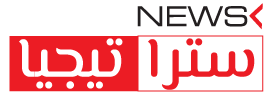Trump’s intensified offensive against the U.S. Media: A Multi-Faceted attack on press freedom

Department of Research, Studies and International News 11-02-2025
Since his return to the White House, former President Donald Trump has dramatically escalated his long-standing antagonism toward the press. His administration has taken a series of aggressive steps against journalists and media outlets that have been critical of him, raising concerns among free speech advocates. While Trump has always been vocal in his attacks on the media, labeling unfavorable coverage as “fake news,” his recent actions represent a more structured and sustained effort to challenge and suppress critical voices in the press.
A Shift in Press Access at the Pentagon

Trump’s hostility toward the media is not confined to regulatory pressure or legal battles. His administration has also taken direct steps to limit journalistic access to government institutions. One of the most alarming developments has been the restructuring of the press workspace at the Pentagon. Under the leadership of a former Fox News host now serving as Secretary of Defense, the administration reassigned office spaces previously occupied by mainstream media outlets to far-right publications. Among the new beneficiaries was One America News Network (OANN), an extreme-right channel known for promoting conspiracy theories. OANN now hosts a program featuring former Congressman Matt Gaetz, who was previously investigated for allegations of paying women, including a minor, for sex.
Prominent journalist Katie Couric criticized the move, arguing that it would obstruct national security reporters from effectively covering the Pentagon. Meanwhile, White House Press Secretary Karoline Leavitt announced the creation of a new media chair for podcasters and independent content creators, many of whom lack the editorial standards upheld by traditional news organizations.
Beyond his actions against the press, Trump’s administration has embraced wider measures that critics argue are intended to stifle dissent. These initiatives include:
- Book bans targeting educational materials that address topics such as systemic racism and LGBTQ+ issues.
- Restrictions on access to academic research, particularly in fields that contradict Trump’s political ideology.
- Threats to deport non-citizen protesters who engage in demonstrations against government policies.
- Attempts to impose religious beliefs in government settings, often favoring Christianity over other faiths.
- Proposals to restrict access to sexual content, including materials related to reproductive rights and gender identity.
While tensions between the U.S. government and the press are not new, Trump’s latest campaign against the media is unprecedented in its scope and intensity. Even under former President Barack Obama, journalists faced significant challenges, such as the prosecution of government whistleblowers under the 1917 Espionage Act. The Obama administration also subpoenaed reporters from The Associated Press and Fox News as part of its crackdown on leaks. However, these measures, while controversial, were not accompanied by the kind of personal vendettas and all-out assaults on press freedom that define Trump’s approach.
Trump has taken hostility toward the press to another level, branding journalists as the “enemy of the people” and systematically targeting media organizations he perceives as adversaries. During his first presidency, the Justice Department investigated numerous reporters and whistleblowers. Now, his administration appears to be escalating these efforts, using both legal and regulatory mechanisms to intimidate the press into submission.
The Future of Press Freedom Under Trump
As Trump’s administration continues its offensive against the media, the future of press freedom in the U.S. remains uncertain. With legal battles mounting, regulatory agencies being weaponized, and access to government institutions increasingly restricted, journalists face a more hostile environment than ever before.
While Trump’s supporters view his actions as a necessary response to media bias, free speech advocates warn that these efforts threaten the very foundation of democratic discourse. As Seth Stern of the Freedom of the Press Foundation put it, “The press plays a crucial role in holding those in power accountable. When government officials use their authority to silence criticism, democracy itself is at risk.”





